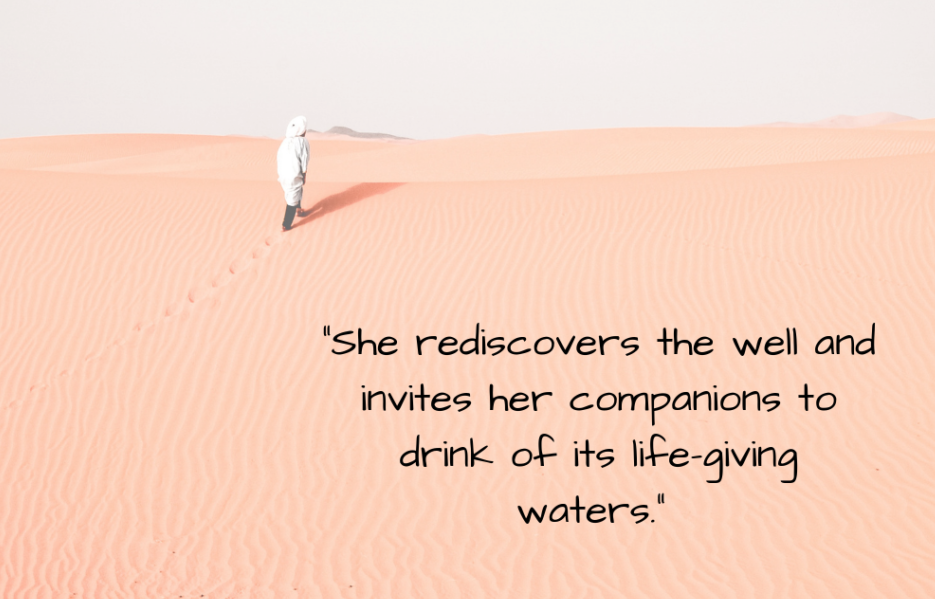(Act One) The setting is a desert which, like all deserts, has to be crossed. In the middle of this desert is a well, fed by an underground spring of fresh, loud, rushing water. This particular well is fortunately located just at the point where thirsty pilgrims need refreshment if they are to survive and continue on their way. So in those days news got about that it was relatively safe to cross the desert as long as you listened for the sound of the spring and stopped to drink from the well. Generations of pilgrims were able to cross the desert and head into the wilderness — which is where God’s people were usually traveling.
(Act Two) Many years later news spread of a building in the middle of the desert, a cathedral of great beauty. Throughout the years pilgrims, when they passed, had dropped stones (some fancier than others) to mark the location of the wellspring, an improvement which they hoped would show their respect for the well. Soon a cathedral stands in the middle of this desert, one stone buttressing another. Pilgrims stop, look up, and admire the cathedral from a distance. Yet most of them are close to death from thirst when they approach. They can neither hear the sounds of rushing water nor see the well, now covered by stones.
(Act Three) Centuries later, in the same desert, one very thirsty pilgrim dares to approach the cathedral, now overgrown by weeds after years of neglect. She (most late medieval pilgrims were women) notices that a stone is loose. Pulling it out, so that she might replace it correctly, she hears the sound of rushing waters! She rediscovers the well and invites her companions to drink of its life-giving waters. Soon news spreads of the cathedral and of the well. The cathedral was imperfectly built, always standing in need of repair; the well, which stood in its midst, is free-flowing. Future generations of pilgrims, sighting the familiar landmark of the cathedral, draw close to the well, drink of its springs, and live to cross the desert.
If this parable of thirst, courage, and deconstruction speaks to you, here are some possible ways to interact with it.
1. Ponder where in your life the living water flowing from your Source into your soul has perhaps become blocked. Are you requiring certainty before you move? Are you taking literally what was meant metaphorically? Are you resisting the next step on your journey because you feel afraid? Are you trusting external authority at the expense of your own experience? Something else?
2. Use the story as your text for Lectio Divina.
3. Put yourself in the story. Be the thirsty pilgrim crossing the arid desert and approaching the cathedral. Be the thirsty pilgrim pulling aside the loose stone and hearing the sound of water. Hold the stone in your hands. Drink deeply of the cool, living water. What do you hear and feel?
4. If you’d like to chat about what this story may be saying to you, contact me for a free no-strings-attached Clarity Call.
PS. Please subscribe to my weekly letter for the latest on coaching openings, retreats, workshops, free community conversations, and more!
PPS. I’m indebted to Fredrica Harris Thompsett’s We Are Theologians for this beautiful parable.
If you’re a long-time reader and this parable seems familiar, you’re right! This post was originally published several years ago. I’m not sure exactly when. 🙂
Photo by Rubén Bagüés on Unsplash, edited on Canva.

